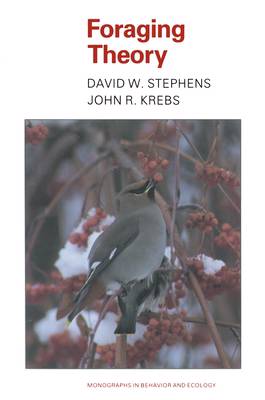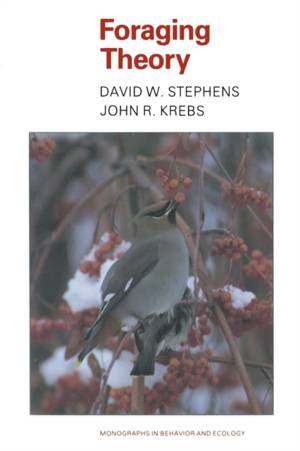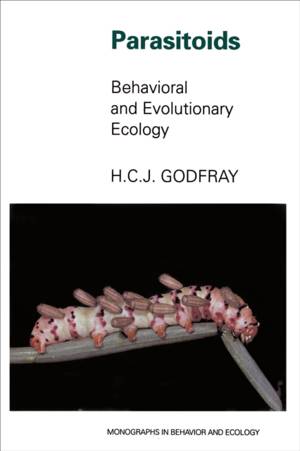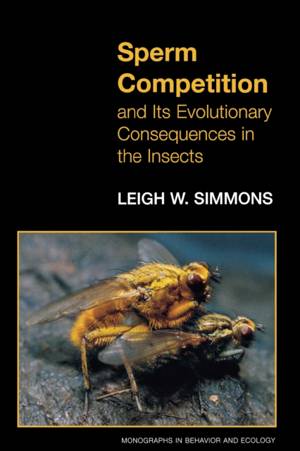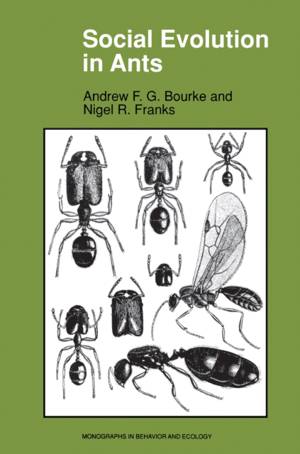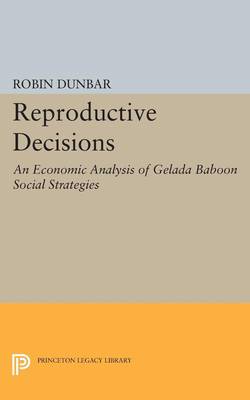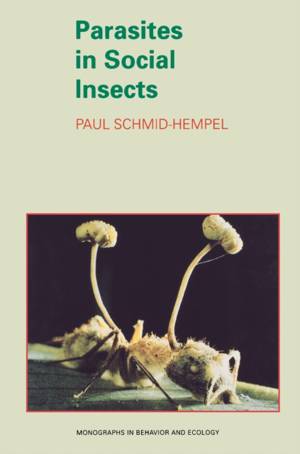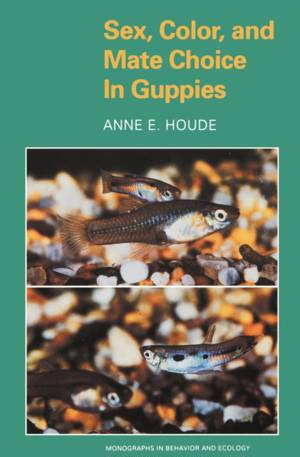
- Retrait gratuit dans votre magasin Club
- 7.000.000 titres dans notre catalogue
- Payer en toute sécurité
- Toujours un magasin près de chez vous
- Retrait gratuit dans votre magasin Club
- 7.000.0000 titres dans notre catalogue
- Payer en toute sécurité
- Toujours un magasin près de chez vous
Résultats pour "Monographs in Behavior and Ecology"
-
The Ostrich Communal Nesting System
Brian C R Bertram
- Livre relié | Anglais | Monographs in Behavior and Ecology
- As the study of cooperative breeding systems expands, a number of key species form the examples that underpin our general understanding. The ostrich i... Savoir plus
185,45 €Livraison 2 à 3 semaines185,45 €Livraison 2 à 3 semaines -
Foraging Theory:
David W Stephens, John R Krebs
- Livre relié | Anglais | Monographs in Behavior and Ecology
- This account of the current state of foraging theory is also a valuable description of the use of optimality theory in behavioral ecology in general. ... Savoir plus
67,95 €Livraison 1 à 4 semaines67,95 €Livraison 1 à 4 semaines -
Dynamic Modeling in Behavioral Ecology
Marc Mangel, Colin Whitcomb Clark
- Livre broché | Anglais | Monographs in Behavior and Ecology | n° 8
- This book describes a powerful and flexible technique for the modeling of behavior, based on evolutionary principles. The technique employs stochastic... Savoir plus
133,95 €Livraison 2 à 3 semaines133,95 €Livraison 2 à 3 semaines -
Foraging Theory
David W Stephens, John R Krebs
- Livre broché | Anglais | Monographs in Behavior and Ecology | n° 6
- This account of the current state of foraging theory is also a valuable description of the use of optimality theory in behavioral ecology in general. ... Savoir plus
167,95 €Livraison 2 à 3 semaines167,95 €Livraison 2 à 3 semaines -
Polygyny and Sexual Selection in Red-Winged Blackbirds
William A Searcy, Ken Yasukawa
- Livre relié | Anglais | Monographs in Behavior and Ecology
- The purpose of this book is to explain why red-winged blackbirds are polygynous and to describe the effects of this mating system on other aspects of ... Savoir plus
293,45 €Livraison 2 à 3 semaines293,45 €Livraison 2 à 3 semaines -
Parasitoids
H Charles J Godfray
- Livre broché | Anglais | Monographs in Behavior and Ecology | n° 12
- Parasitoids lay their eggs on or in the bodies of other species of insect, and the parasitoid larvae develop by feeding on the host, causing its event... Savoir plus
177,45 €Livraison 2 à 3 semaines177,45 €Livraison 2 à 3 semaines -
Social Foraging Theory
Luc-Alain Giraldeau, Thomas Caraco
- Livre broché | Anglais | Monographs in Behavior and Ecology | n° 73
- Although there is extensive literature in the field of behavioral ecology that attempts to explain foraging of individuals, social foraging--the ways ... Savoir plus
167,95 €Livraison 2 à 3 semaines167,95 €Livraison 2 à 3 semaines -
Mating Systems and Strategies
Stephen M Shuster, Michael J Wade
- Livre broché | Anglais | Monographs in Behavior and Ecology | n° 26
- This book presents the first unified conceptual and statistical framework for understanding the evolution of reproductive strategies. Using the concep... Savoir plus
151,45 €Livraison 2 à 3 semaines151,45 €Livraison 2 à 3 semaines -
Sexual Conflict
Göran Arnqvist, Locke Rowe
- Livre broché | Anglais | Monographs in Behavior and Ecology | n° 27
- The past decade has seen a profound change in the scientific understanding of reproduction. The traditional view of reproduction as a joint venture un... Savoir plus
141,95 €Livraison 2 à 3 semaines141,95 €Livraison 2 à 3 semaines -
Sperm Competition and Its Evolutionary Consequences in the Insects
Leigh W Simmons
- Livre broché | Anglais | Monographs in Behavior and Ecology | n° 24
- One hundred years after Darwin considered how sexual selection shapes the behavioral and morphological characteristics of males for acquiring mates, P... Savoir plus
167,95 €Livraison 2 à 3 semaines167,95 €Livraison 2 à 3 semaines -
Leks
Jacob Höglund, Rauno V Alatalo
- Livre broché | Anglais | Monographs in Behavior and Ecology
- The evolution of leks--clusters of small territories where males congregate and display in order to attract mates--is of central issue in behavioral e... Savoir plus
91,95 €Livraison 2 à 3 semaines91,95 €Livraison 2 à 3 semaines -
The the Evolution of Parental Care
T H Clutton-Brock
- Livre relié | Anglais | Monographs in Behavior and Ecology
- Synthesizing studies of parental care in a wide variety of animals, this book is the first attempt to provide general answers to the following importa... Savoir plus
114,45 €Pré-commander, date de disponibilité inconnue114,45 €Pré-commander, date de disponibilité inconnue -
Foundations of Social Evolution
Steven A Frank
- Livre broché | Anglais | Monographs in Behavior and Ecology | n° 19
- This is a masterly theoretical treatment of one of the central problems in evolutionary biology, the evolution of social cooperation and conflict. Ste... Savoir plus
141,95 €Livraison 2 à 3 semaines141,95 €Livraison 2 à 3 semaines -
Social Evolution in Ants
Andrew F G Bourke, Nigel R Franks
- Livre broché | Anglais | Monographs in Behavior and Ecology | n° 16
- Biologists since Darwin have been intrigued and confounded by the complex issues involved in the evolution and ecology of the social behavior of insec... Savoir plus
136,95 €Livraison 2 à 3 semaines136,95 €Livraison 2 à 3 semaines -
Helping Communal Breeding in Birds
J L Brown
- Livre relié | Anglais | Monographs in Behavior and Ecology
- An overview of the extensive and frequently controversial literature on communally breeding birds developed since the early 1960s, when students of ev... Savoir plus
319,45 €Livraison 2 à 3 semaines319,45 €Livraison 2 à 3 semaines -
The Biology of the Naked Mole-Rat
- Livre relié | Anglais | Monographs in Behavior and Ecology
- This volume brings together more than a decade of information collected in the field and lab on the naked mole-rat (Heterocephalus glaber), a northeas... Savoir plus
470,45 €Livraison 2 à 3 semaines470,45 €Livraison 2 à 3 semaines -
The Evolution of Animal Communication
William A Searcy, Stephen Nowicki
- Livre broché | Anglais | Monographs in Behavior and Ecology | n° 30
- Gull chicks beg for food from their parents. Peacocks spread their tails to attract potential mates. Meerkats alert family members of the approach of ... Savoir plus
141,95 €Livraison 2 à 3 semaines141,95 €Livraison 2 à 3 semaines -
Leks
Jacob Höglund, Rauno V Alatalo
- Livre relié | Anglais | Monographs in Behavior and Ecology
- The evolution of leks--clusters of small territories where males congregate and display in order to attract mates--is of central issue in behavioral e... Savoir plus
243,45 €Livraison 2 à 3 semaines243,45 €Livraison 2 à 3 semaines -
Reproductive Decisions
Robin Dunbar
- Livre relié | Anglais | Monographs in Behavior and Ecology
- Robin Dunbar uses economic models to explore the social behavior of the gelada baboon (Theropithecus gelada), a unique species, whose social system is... Savoir plus
251,45 €Livraison 2 à 3 semaines251,45 €Livraison 2 à 3 semaines -
Parasites in Social Insects
Paul Schmid-Hempel
- Livre broché | Anglais | Monographs in Behavior and Ecology | n° 20
- This book analyzes for the first time how parasites shape the biology of social insects: the ants, wasps, bees, and termites. Paul Schmid-Hempel provi... Savoir plus
177,45 €Livraison 2 à 3 semaines177,45 €Livraison 2 à 3 semaines -
Hormones and Animal Social Behavior
Elizabeth Adkins-Regan
- Livre broché | Anglais | Monographs in Behavior and Ecology | n° 28
- Research into the lives of animals in their natural environments has revealed a rich tapestry of complex social relationships and previously unsuspect... Savoir plus
141,95 €Livraison 2 à 3 semaines141,95 €Livraison 2 à 3 semaines -
Model Systems in Behavioral Ecology: Integrating Conceptual, Theoretical, and Empirical Approaches
- Livre broché | Anglais | Monographs in Behavior and Ecology | n° 23
- A key way that behavioral ecologists develop general theories of animal behavior is by studying one species or a closely related group of species--''m... Savoir plus
159,95 €Livraison 2 à 3 semaines159,95 €Livraison 2 à 3 semaines -
Neural Networks and Animal Behavior
Magnus Enquist, Stefano Ghirlanda
- Livre broché | Anglais | Monographs in Behavior and Ecology | n° 29
- How can we make better sense of animal behavior by using what we know about the brain? This is the first book that attempts to answer this important q... Savoir plus
141,95 €Livraison 2 à 3 semaines141,95 €Livraison 2 à 3 semaines -
Sex, Color, and Mate Choice in Guppies
Anne E Houde
- Livre broché | Anglais | Monographs in Behavior and Ecology | n° 18
- The Trinidadian guppy ( Poecilia reticulata ) is well known to biologists and home aquarium enthusiasts alike. Scientists have studied guppies for mos... Savoir plus
151,45 €Livraison 2 à 3 semaines151,45 €Livraison 2 à 3 semaines






